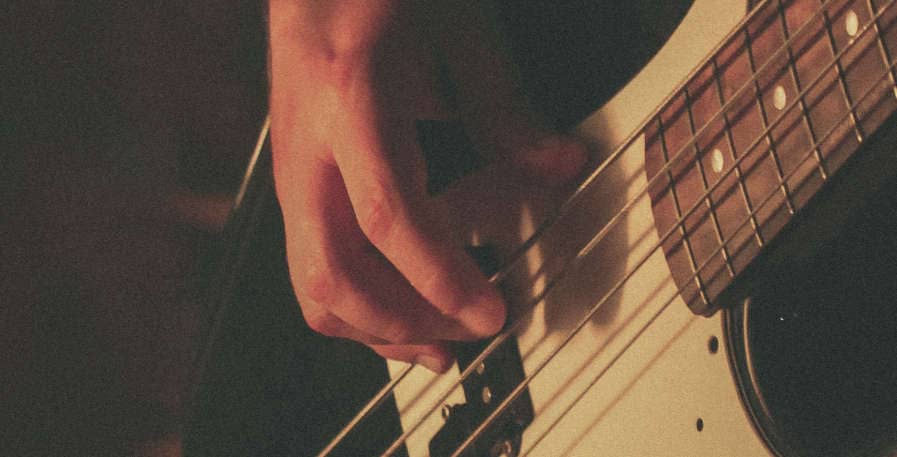Where you place your thumb when playing the bass impacts your dexterity, stamina, and tone. Yet, bassists seem to place both their right and left-hand thumbs at all kinds of spots. So with all the various ways to go about it, where should you put your thumb when playing the bass guitar?
The thumb of your picking hand should be positioned on either the pickup or on the heaviest unplayed string when playing the bass. Alternatively, you can use the floating thumb technique to keep unplayed strings muted. The fretting hand thumb should feel relaxed and be kept behind the neck of the bass.
While there are multiple good places to keep your thumb while playing, these are all based on 3 key concepts. Good range of motion, ease of muting strings, and ease of plucking strings.
How you should place your thumb when playing the bass also depends on your physiology. Thus, a technique that works wonders for others, could feel painful for you.
Therefore, I`m going to cover the pros and cons of common places to place the thumb on your picking hand when playing. I will also show you how to position your fretting hand thumb to make fretting notes easier and to avoid injury.
Left handed? At times, I refer to the plucking hand as the right hand and the fretting hand as the left hand. If you are left handed, all of the information in this article is applicable to you, though the name of the hands does need to be switched around.
Right-hand thumb position
Below are 4 common ways to position and rest your thumb when playing the bass.
They are all viable options, but they all also have their pros and cons. Therefore, my recommendation is to experiment with all of these in order to find a thumb rest position that suits your style and preferences.
Rest on Pickup:
A common way for bassists to position their picking hand thumb is to rest it on the pickup. The advantage of this is that you don`t have to think about moving your thumb and you can instead focus on plucking the strings.
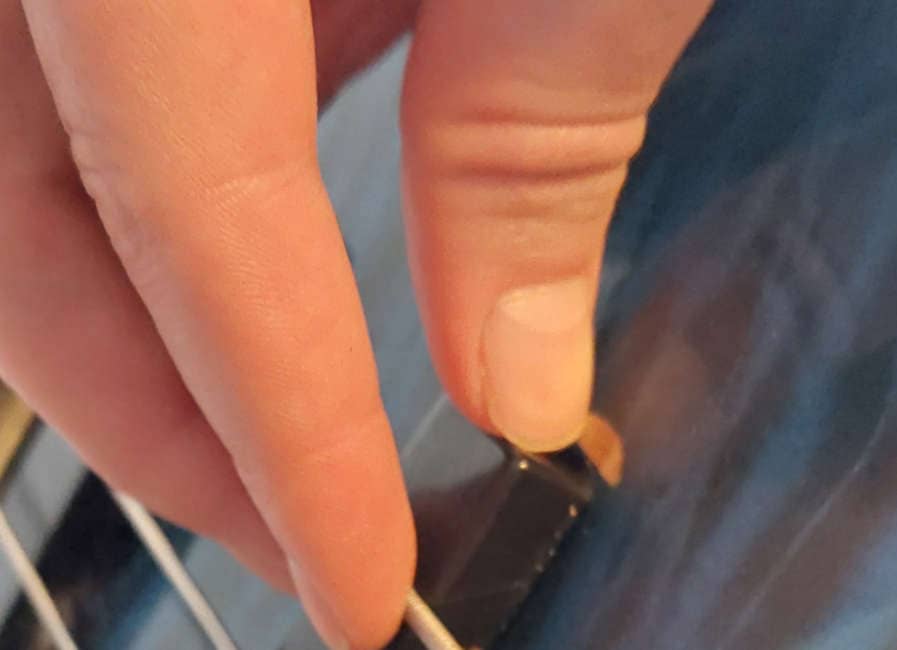
The disadvantage is that you will have a wide range of motion. For example, in order to move from the E to the G string, your fingers will need to make a massive leap. Depending on what bass line you`re playing, this can make plucking cumbersome and can make it difficult to be consistent with your tone.
Similar to resting the thumb on the pickup, some bassists place their thumb on pickup covers. This is slightly different as the pickup cover forces your thumb into a bent or horizontal position. For this reason, many bassists elect to remove pickup covers from their basses entirely.
Some older basses have a thumb rest, which is specifically intended for resting the thumb on. In my book, it is a viable way to play the bass but carries the same disadvantages as resting your thumb on the pickup or pickup cover.
Movable Anchor
Personally, I prefer resting my thumb on top of the deepest unplayed string. For example, If I`m plucking the D string, I will position my thumb to rest on the A string.
This technique is called the movable anchor, and looks like this:
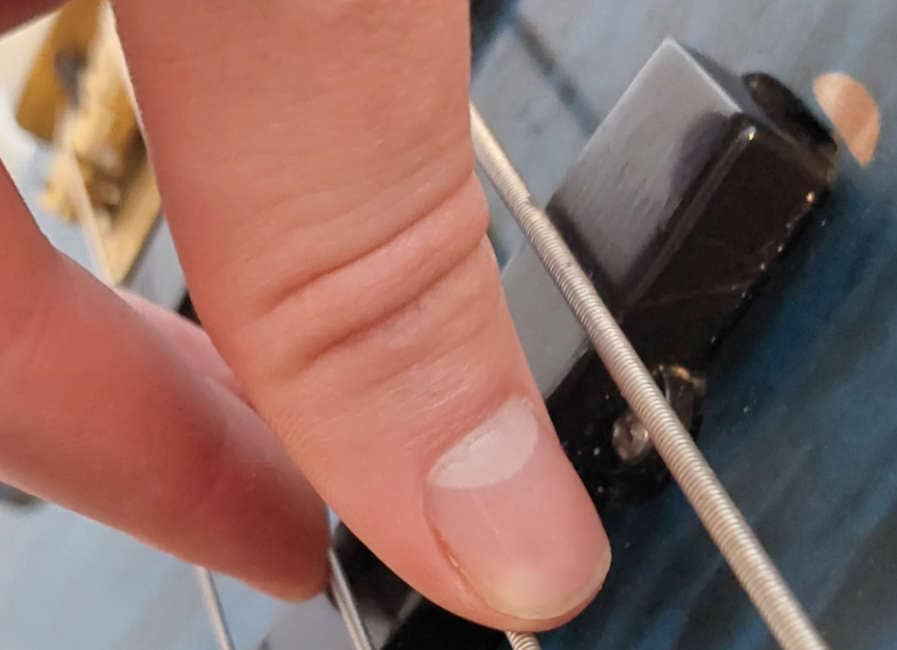
What I find great about the movable anchor is that I don`t have to reach with my fingers to pluck strings. This is because my Index and middle finger are always naturally right on top of the string I want to play due to my thumb placement.
The disadvantage is that it will take some practice before you can fluidly and comfortably move your thumb between strings. At a really advanced level, it can also be somewhat limiting compared to the floating thumb technique.l
Note: If I`m plucking the deepest string while using the movable anchor technique, I will switch to resting my thumb on the pickup instead.
Floating Thumb:
With the floating thumb technique, your thumb is vertically floating on top of the strings. It is still touching unplayed strings to keep them muted, but it is not actively resting against anything.
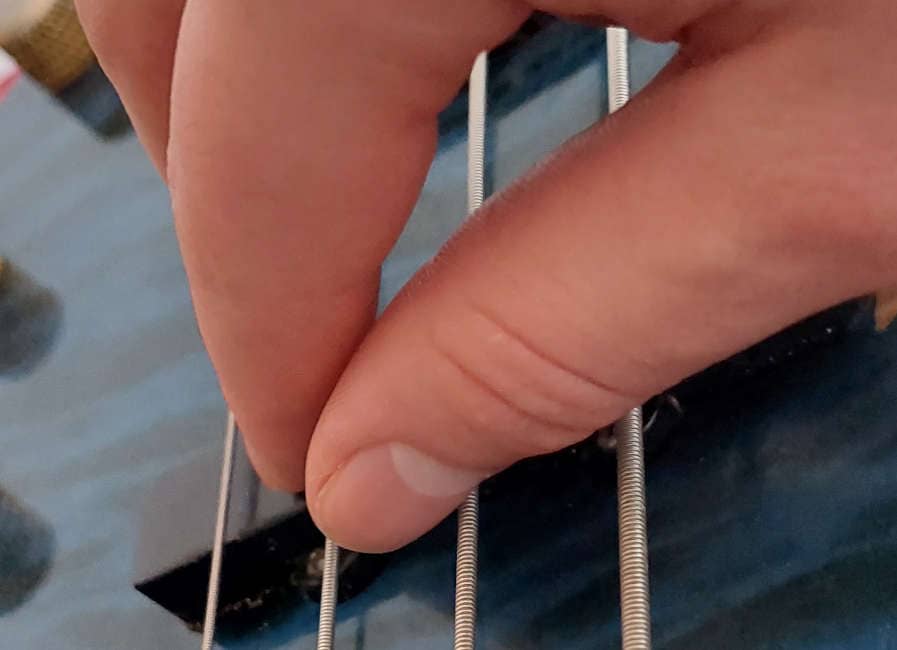
The floating thumb position allows you to move between strings in a fluid manner. It also makes it easier to keep your plucking and tone consistent.
This is because similar to resting the thumb on a single string, you will have a great range of motion as your fingers will always be right on top of the string you are playing.
The floating thumb technique is also a great option for 5 and 6-string players. With more strings to keep muted, this method makes it easier to prevent unwanted strings from ringing out.
However, similar to the movable anchor, the disadvantage is that it takes even more time to develop control and become proficient at this technique.
Rest on the neck:
Resting your thumb on the neck of the bass is similar to resting it on the pickup. It provides you with a sturdy anchor spot that you won`t have to move your thumb away from.
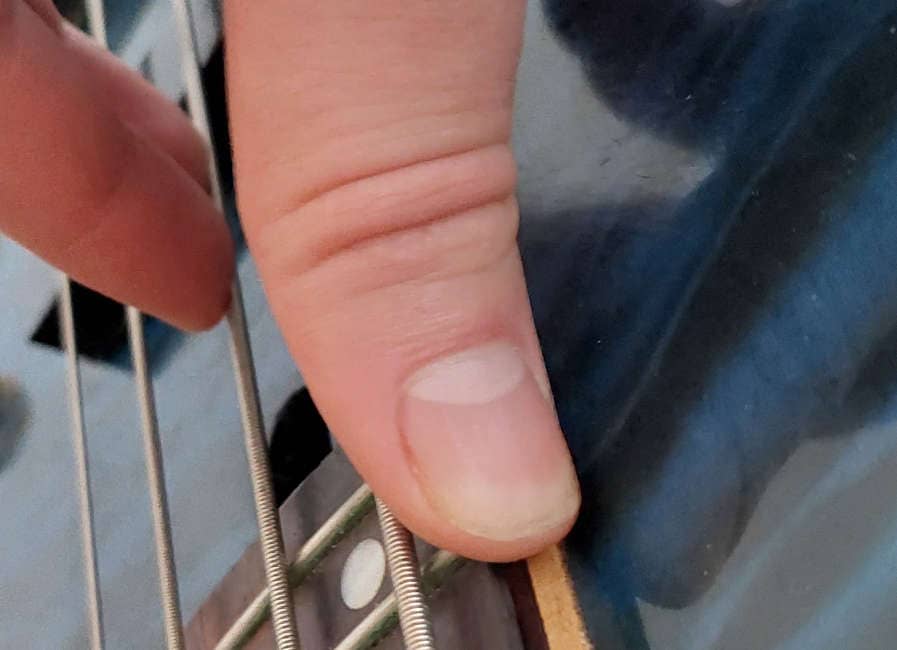
This position does have several disadvantages though. It commits you to a rounder and darker tone, as you will always be playing high up on the strings. The comfortability of this position can also greatly vary between basses, and your range of motion will be limited.
The neck is a viable place to rest your thumb, but it is thus not a technique I would recommend over the other 3 options listed above.
Left-hand thumb position
Your fretting hand thumb should be placed at the back of the neck at a slight angle. It should never tense up and should not be bent at an angle that feels uncomfortable or unnatural.
A common mistake I see when it comes to bass guitar hand positioning is that people grasp the neck. When this happens, the thumb is generally sticking up from behind the bass and resting adjacent to the E string.
You want to avoid this for several reasons. First of all, it puts your hand in an unnatural position that will become painful to maintain over time. Second, this generally means that there is an unnecessary amount of force being applied, which will negatively affect your stamina.
Where exactly your thumb should be placed depends on your physiology, your bass, and what string you are currently plucking. As a starting point, I recommend placing it at the middle of the neck. Then, move it slightly upwards on downwards if this feels uncomfortable.
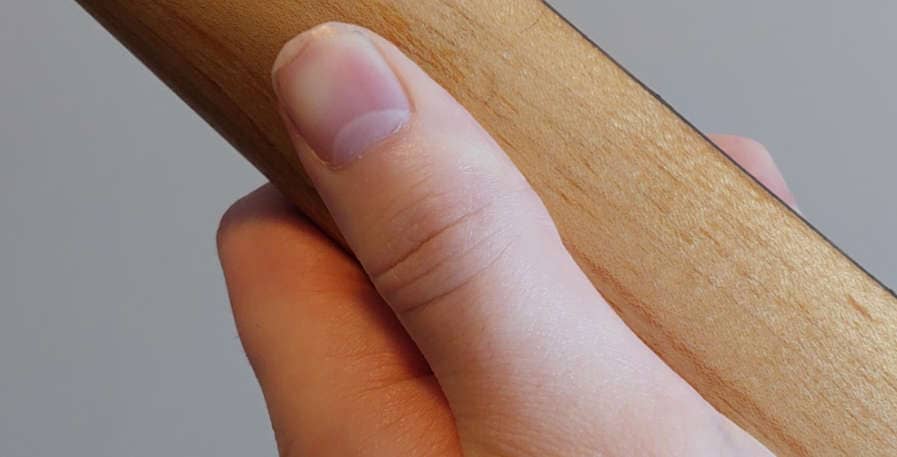
Furthermore, the placement of your thumb can, and should, change as you play. When playing on your G string, your thumb should move upwards and point more toward the back of the E string. Vice Versa, your thumb and hand position should move down toward the back of the G string when plucking the E-string.
Conclusion
As long as you are not hurting, notes don`t differ in volume, and unwanted strings are not ringing out, your thumb is in a good spot when playing the bass.
This is because there is no set answer to where to place your thumb. Rather, there are different methods for making strings easily reachable and for keeping your tone consistent.
One method I didn`t mention above, is that I have seen some bass players rest their thumbs on top of the body of the bass. Do not do this. You will have a horrible range of motion, notes will vary in intensity, and playing will feel cumbersome.
Rather, pick one of the techniques listed above for your picking hand. You can even use several different ones, and you can slightly modify them to fit your style and physiology.
For the fretting hand thumb, the above points should serve as a starting point. By tailoring the placement slightly to find a position that works for you and doesn`t feel painful you will make playing easier and prevent injuries down the road.
Proper thumb placement is helpful in playing faster basslines. For other methods for increasing your speed, check out these 3 tips for making the neck on your bass faster.

